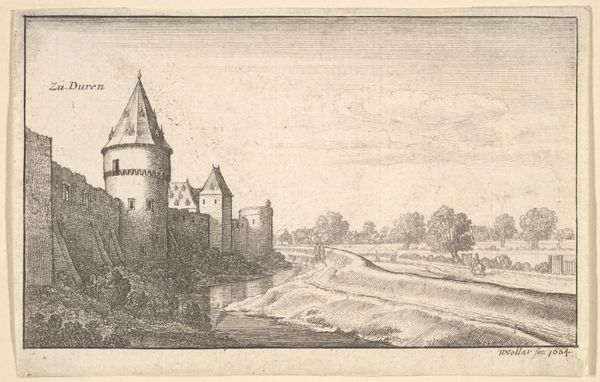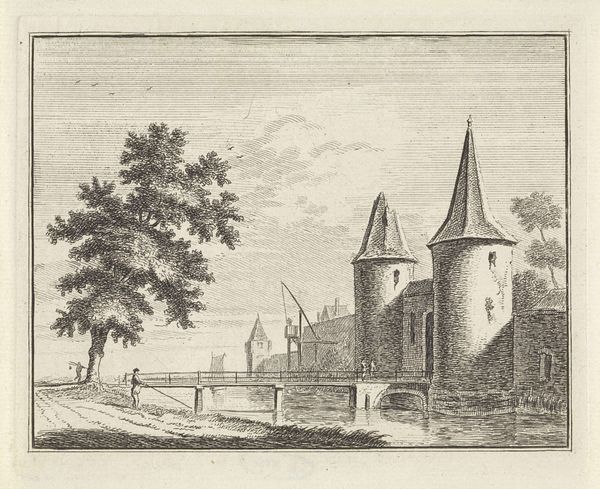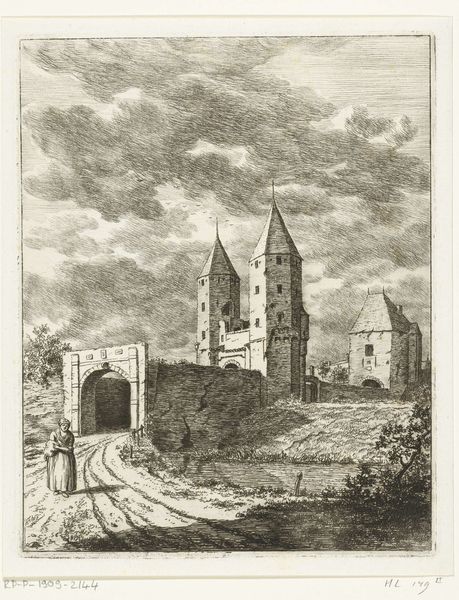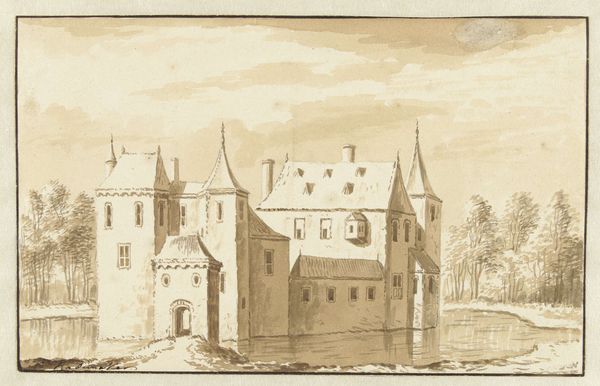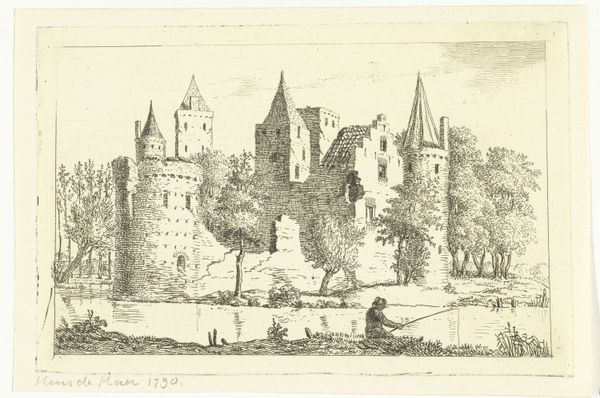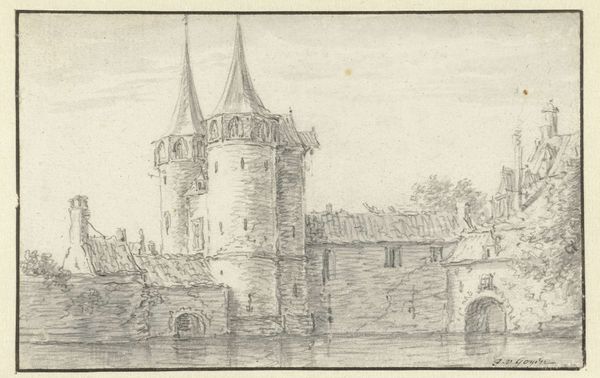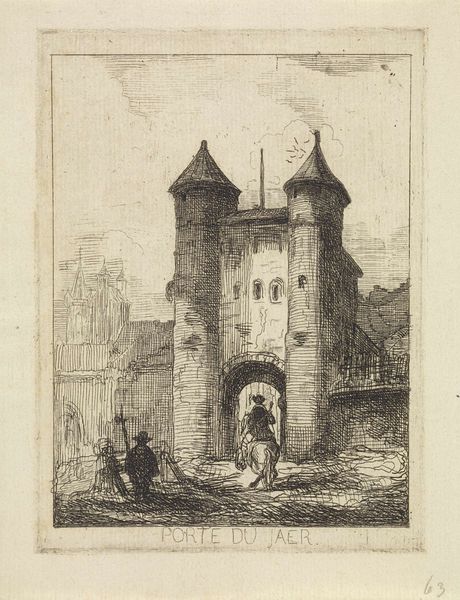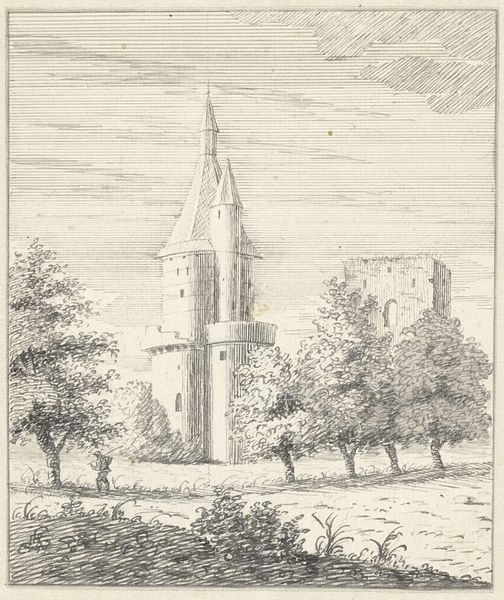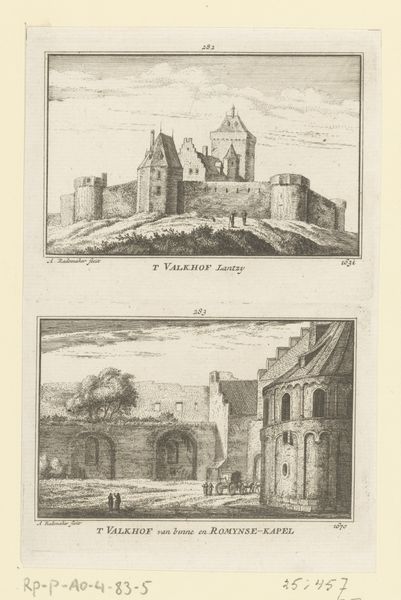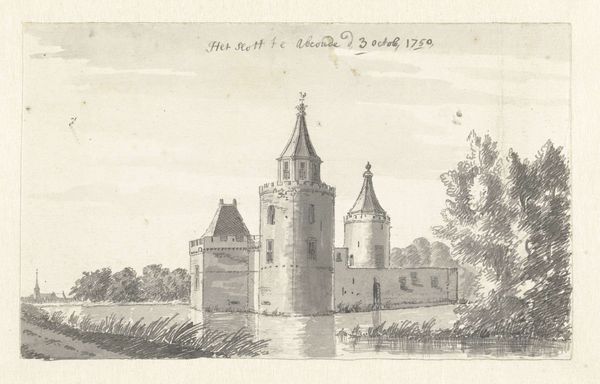
drawing, print, engraving
#
drawing
#
medieval
# print
#
landscape
#
form
#
line
#
cityscape
#
engraving
#
realism
Dimensions: height 205 mm, width 163 mm
Copyright: Rijks Museum: Open Domain
Curator: Ernst Willem Jan Bagelaar’s engraving, "Gezicht op de Gruitpoort te Doetinchem," likely created sometime between 1798 and 1837, presents a rather serene cityscape. What's your immediate impression? Editor: There’s a stark beauty to its monochrome depiction. It evokes a sense of historical weight, almost melancholic, in its portrayal of aging architecture and the solitary figure by the path. Curator: It's fascinating to consider the materials and methods Bagelaar employed. Engraving demanded significant technical skill and control. Each line was meticulously etched onto a metal plate, which would have been a labor intensive process. The resulting print is a testament to that manual effort and craft. Editor: Absolutely. The choice of subject too is telling. The Gruitpoort, as a physical boundary and entry point, represents so much about the social and economic control of the city at that time. Its presence in civic memory—its evolving function, adaptation, or demolition – would have been debated in local circles. Curator: Precisely! The texture he achieves—the gradations of light and shadow created solely through line work—speak to an artist deeply engaged with his tools and materials. And those lines shape the entire aesthetic, evoking a strong sense of atmosphere, wouldn’t you say? Editor: Without question. It speaks to a collective imagining. One might think about how its consumption played a role in reinforcing specific notions of the city's identity, of the relationship between the urban center and the surrounding landscape, or the citizen’s place within it all. Curator: To create something so enduring with relatively simple means really highlights the importance of material ingenuity. The subtle variations he's coaxed from the engraved lines are incredibly striking, especially on closer inspection. Editor: Looking at it from a social context, prints like this made these views accessible to a wider public. Rather than remaining the preserve of the wealthy elite, this sort of image can become woven into public imagination, informing future views of citizenship, society and the importance of such constructions. Curator: Exactly! From the perspective of art as object and the means of its production, Bagelaar's work reminds us of the connection between process, labor, and artistic expression. Editor: It highlights how power operates to shape and be shaped by physical environments. The politics inherent in portraying, controlling and consuming imagery, a role that continues to shape art making. Curator: Indeed. Thank you. I think this glimpse at materiality provides valuable insight into the work. Editor: And it underlines the role of art and the political lifeblood that beats within it.
Comments
No comments
Be the first to comment and join the conversation on the ultimate creative platform.
